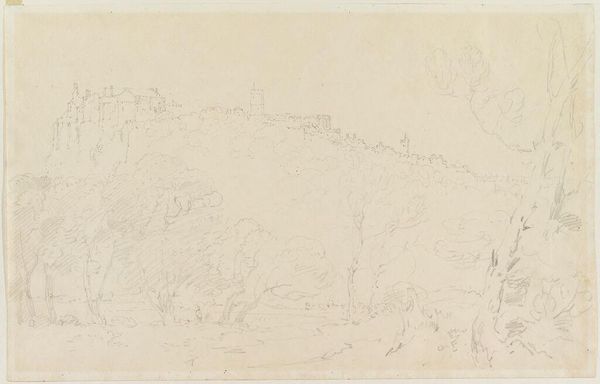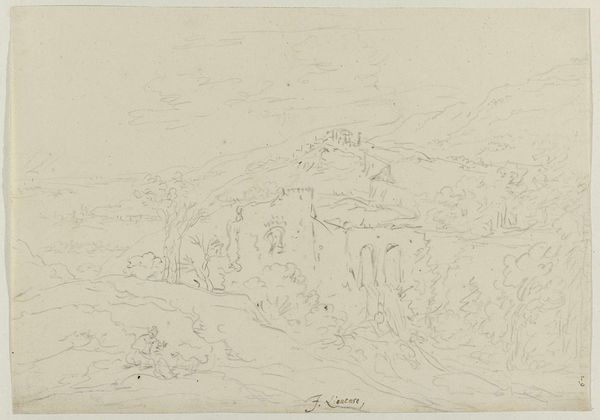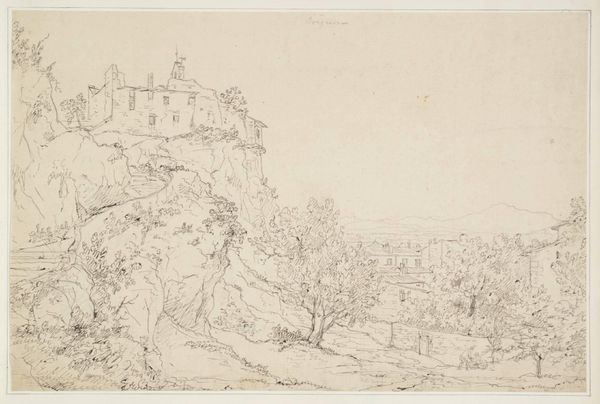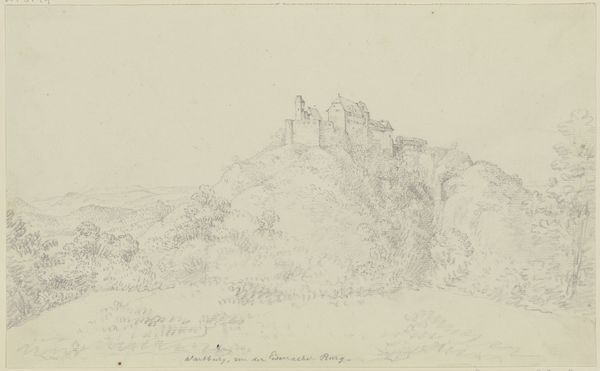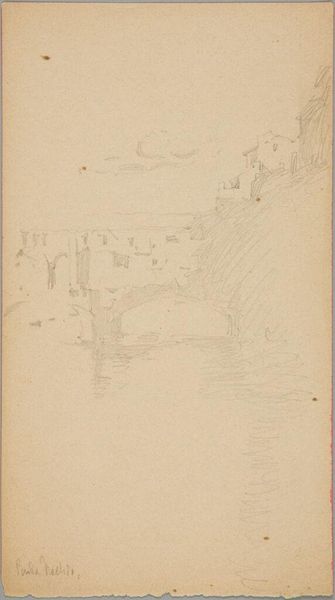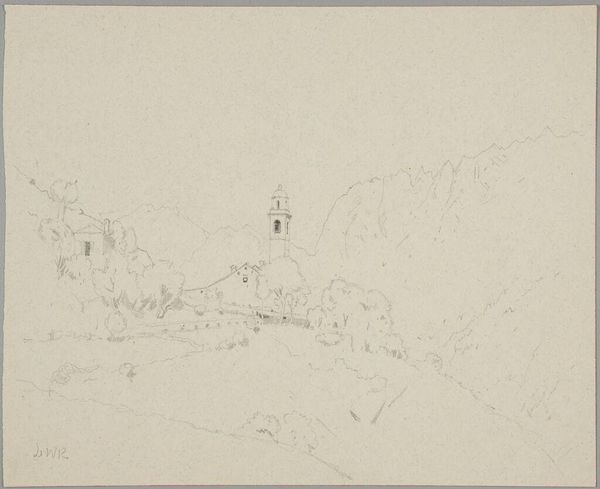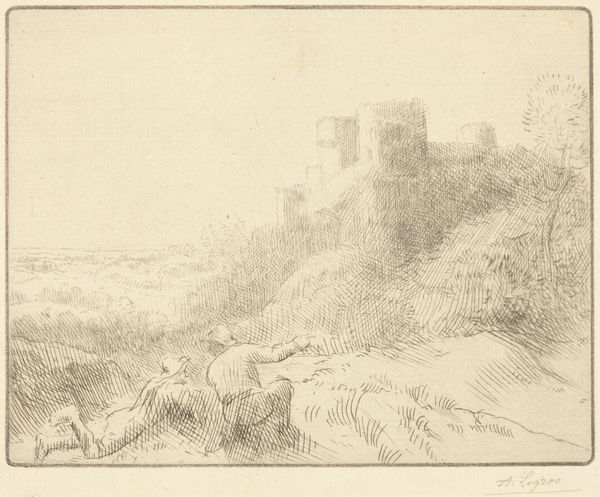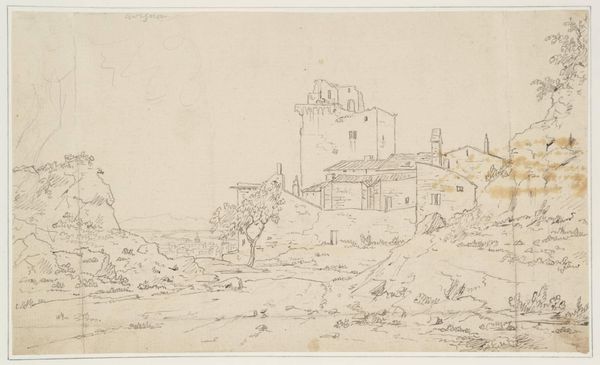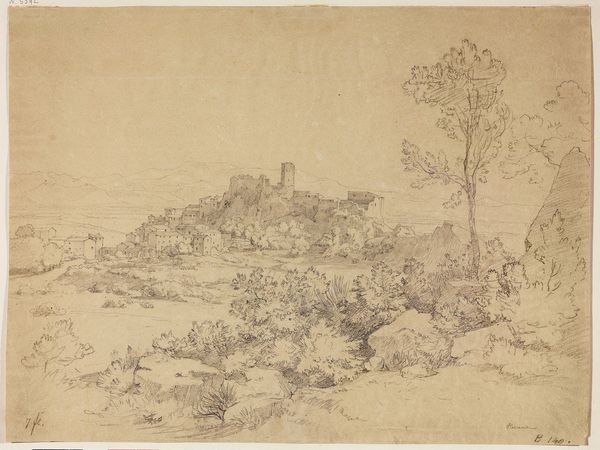
drawing, paper, pencil, graphite
#
drawing
#
light pencil work
#
landscape
#
paper
#
underpainting
#
romanticism
#
pencil
#
france
#
graphite
Dimensions: 225 × 352 mm
Copyright: Public Domain
Editor: Here we have Corot's "View of Nepi," created around 1826 using pencil and graphite on paper. The delicate, almost ethereal quality of the light pencil work gives the landscape a dreamlike feeling. What strikes you most about this piece? Curator: It's precisely that delicate application of graphite that commands attention. Notice how Corot utilizes hatching and cross-hatching, not merely to describe form, but to modulate light itself. Do you see how the building seems almost to emerge from the very paper? Editor: Yes, it’s like he's building the town with light and shadow rather than lines. Is that why the forms below feel less defined, almost like suggestions? Curator: Precisely. This use of suggestion over explicit detail prompts us to consider the underlying structure. The contrast between the defined architectural forms above and the more ambiguous, almost amorphous, forms below creates a dynamic tension within the composition. What kind of rhythm do you notice? Editor: Well, my eye definitely jumps between the light, airy treatment of the base, and the heavy darks describing the buildings at the summit. It’s an upward progression, light to dark, vague to definite. Curator: An astute observation. Consider that the lack of clear tonal variation also serves to flatten the picture plane. Corot isn’t just representing Nepi, he is playing with the very conventions of representation itself. The work subverts your assumptions about realism by flattening space to create depth of focus. Editor: So it's a meditation on the process of seeing and rendering. It’s less about the specific location, and more about how we perceive landscape itself? Curator: Precisely. The very act of drawing is foregrounded. This interplay of light, shadow, and form truly exemplifies a sophisticated handling of line and perspective, wouldn't you agree? Editor: I see that now. I had initially dismissed it as just a preliminary sketch, but it is doing so much more by questioning what a sketch can achieve. Curator: Indeed. It allows for greater study on Corot’s technique, inviting the observer to reconsider established traditions through engagement.
Comments
No comments
Be the first to comment and join the conversation on the ultimate creative platform.
